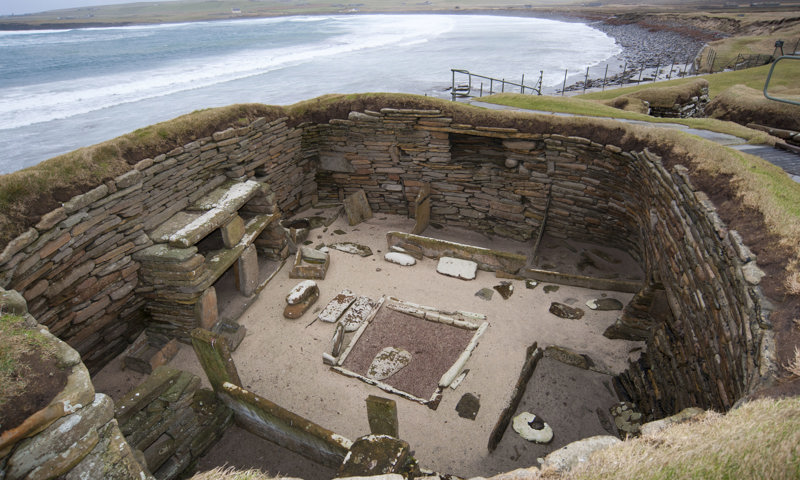Banks in Albania Until the declaration of Independence in 1912, there were only branches of a Turkish bank called “Ottoman Bank” in Albania. The office of this Bank in Albania operated in the centers of the vilayets of Shkodra, Ioannina, Kosovo, Skopje, and Bitola. During their activity, the Bank’s branches were subject to the Ottoman state’s laws and were inspected by a supervisor appointed by the government. This Bank had the privilege of issuing coins throughout the Empire, lending, depositing bonds, borrowing and selling bills of exchange, and so on. There was a commercial court for disputes between the Bank and private individuals.
In 1913, almost a year after the secession of Albania from the Empire and the creation of the Albanian State, with the concession agreement dated October 4, 1913, of the Albanian Government with “Wiener Bank Verein” based in Vienna and “Banca Commerciale Italiana” based in Milan, the National Bank of Albania with Austrian-Italian capital was established. The concession was granted for 60 years with the right of extension. The Bank’s headquarters would be in Albania’s capital and would be subject to the Albanian State laws, which “would be responsible for the security and protection of the bank”. This Bank started its activity with the local government and private ones, but there is no data for the continuation of its business after June 1914, when the riots of the First World War started.
In 1921, the Albanian Parliament of that time expressed the desire to establish a national bank. In the minutes of May 16, 1921, it is stated, “..we will see that the import is more significant than the export. It tells us that our money is running out. Therefore, we formed the idea that when the gold comes out, the day will come when our State will be deprived. Also, to deal with this situation, the Parliament must propose to the government to form a National Bank with the right to issue, etc. “
From 1921 to 1925, the government made efforts to create an indeed national bank, rejecting offers from Italy, Austria, Belgium, etc. But it was seen that the Albanian State itself did not have the economic opportunity and political security to realize this investment of such a critical nature, so together with other reforms of 1925, the government made an agreement with Italian financiers for the creation of the National Bank of Albania. , which was founded in Rome. In September 1925, it was voted in the Chamber of Deputies and the Senate of the then Albanian Parliament, together with the Statute of the Bank and the Law on the operations of the cash register. This can be called the first law in the field of banking for Albania. But there was still no national currency, and the basic unit of the financial system was the Albanian franc, equal to 0.29 gr gold. The National Bank of Albania was organized as a joint-stock company, with an administrative center in Rome and a directorate that was initially located in Durrës and then in Tirana. The Bank had a recognized autonomy, and the Albanian State did not interfere in the banking activity. Both of these essential elements for the Bank’s position were sanctioned in the Bank’s Statute approved by Parliament. The bank loan was given 10% interest, from 20% in the free usury market.

The Bank would have the right “to take over any banking and financial operations; the exclusive right to issue banknotes that have a legal course, to hold state funds and treasury, to negotiate government and municipal loans, etc.” to prepare the necessary laws for the proper functioning of the Bank In 1934 a branch of the Export Bank of Belgrade was set up which was closed in 1939 with the occupation of Albania by Italy.
In 1937 the Agricultural Bank was opened (based on funds financed by the Italian government under an agreement of March 1936). Its initial capital was 5,000,000 gold francs and was intended to lend to the needs of agriculture, tillage and planting, harvesting, machine purchases, and everything related to agriculture and livestock. This Bank also accepted deposits, being considered Savings Bank, and had the legal obligation to provide treasury services on behalf of the Agrarian Office. The establishment of the Agricultural Bank has been described by scholars of the time as the effect of the Agrarian Reform was initiated and under implementation at that time.
During the Second World War, it is known that Albania was under Italian and then German rule. In the first months, Italy took concrete steps to eliminate investments of other countries, such as the closure of the branch of the Export Bank of Belgrade (1939). Whereas Banka di Napoli in May 1939 absorbed the activity of the Agricultural Bank and secured a monopoly in the field of agricultural credit.
Whereas during the period of German occupation due to the agitated situation of the last World War II, the banking system in Albania went into real chaos, which was finally crowned with the robbery of gold reserves.
In 1944, the new government, which had just emerged from the war, did not recognize the previous agreements with the Italian financiers for the banking system and immediately established the Bank of the Albanian State, approving the law for it (1945). B.SH.SH- was recognized as a state-owned bank with entirely state capital, subordinate to the Minister of Finance. It was known as the only issuing and credit bank in Albania that had the function of issuing currency and maintaining the purchasing power of money and the role of the single state treasury. Although it had lending activity, it was underdeveloped, channeled, and implemented according to the principles of a “centralized and planned economy”.
In 1977, the Agricultural Bank was established in charge of lending to agricultural cooperatives and enterprises. The Agricultural Bank was a state-owned bank that, in cooperation with the Ministry of Agriculture, granted long-term, medium-term and short-term loans. Still, its institutional dependence was on the Minister of Finance.
In 1991 the Agricultural Bank was transformed into the Bank of Agriculture and Development; in 1993, it was transformed into the Agrarian Commercial Bank. In March 1998, it was closed down, transferring part of its activity to the Savings Bank.
In 1990, a part of the activity of the State Bank of Albania was separated, and the National Bank of Commerce was legalized, as a bank for foreign relations, which in 1992 merged with the commercial activity of the State Bank and created the National Commercial Bank that started the business. On January 1, 1993.
In 1992, with the legislative reform, the banking system was created with two levels: the first level was the Bank of Albania (formerly the Bank of the Albanian State), the only authority in the banking system. In the same year, the Savings Bank Institute was transformed into a bank, and the Savings Bank was established. The second level includes all other banks which are organized as companies. Such are the National Commercial Bank, the Savings Bank, the Italian-Albanian Bank (1992), the Arab-Albanian-Islamic Bank (1992), the Dardania Bank (1993), the Tirana Bank (1996), the International Commercial Bank (1997), the American Bank of Albania (1998), First Investment Bank (1999), Interbank Trade (1999), Fefad Bank (1999).
In 2000 one of the state-owned banks, namely the National Commercial Bank and four years later the Savings Bank, underwent privatization. Currently, they are now private banks with foreign capital.









